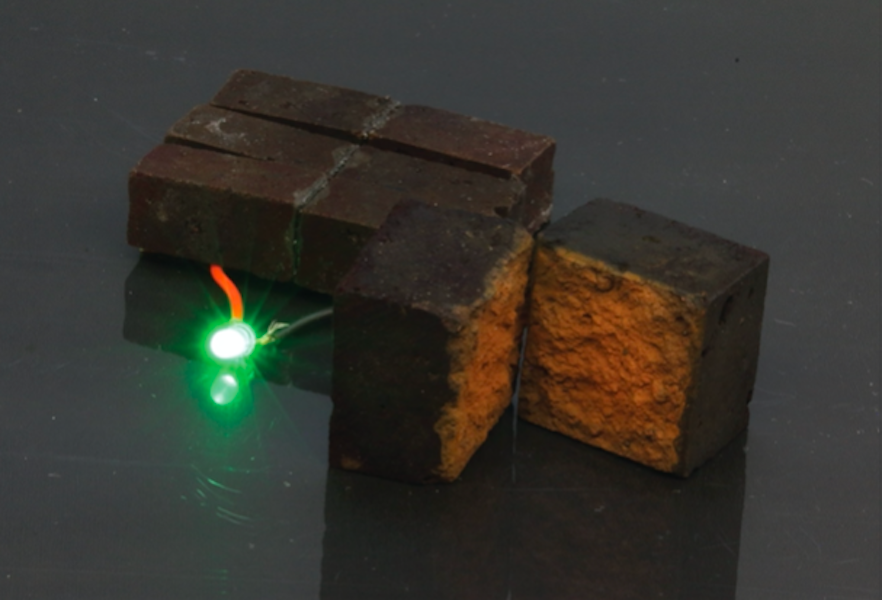You have undoubtedly seen ways to produce energy, such as hydroelectricity, wind energy, and solar energy. Have you ever wondered, though, how walls constructed on your home, place of business, or any other building can create enough energy to power any kind of wiring? It seems strange, don’t you think? Not in that way. Since new technologies are developing that will make this technology possible.
Red bricks have been used in construction for over 6,000 years and are renowned for being among the world’s least expensive, strongest, and most recognizable building materials.
A revolutionary development in the rapidly developing field of sustainable technology has surfaced, one that has the potential to revolutionize the way that buildings use and store energy. Now comes the innovative idea of “smart bricks,” which might completely change how energy is stored inside the framework of our buildings.
Using the concepts of energy technology and building, smart bricks represent an innovative way to energy storage. These bricks appear like conventional construction blocks, but they are made of cutting-edge materials and have advanced features that allow them to store and release energy effectively.
How Smart Bricks Work: The ability to store energy is made possible by the porous nature of bricks. The rust or iron oxide, seeps into the bricks and is dissolved by the acid vapour filling the pores, turning the iron into a reactive form that initiates a chemical reaction. The bricks’ gaps, filled with a substance based on sulfur that interacts with iron, are subsequently used to transport more gas. The pores in the brick are covered in a PEDOT-based electrically conductive plastic, which is an excellent electrical conductor and enables the bricks to be used as an energy-storing material the bricks covered with PEDOT are perfect construction materials since they can power emergency lighting.
Integrating energy storage devices into the building’s infrastructure directly is the fundamental component of smart bricks. Phase-change materials (PCMs) and supercapacitors are among the energy-storing elements found in the bricks. For example, during phase transitions, PCMs may absorb and release huge amounts of heat energy, making them an efficient way to store thermal energy.
Furthermore, inbuilt sensors and control systems that optimise energy storage and distribution depending on building requirements as well as external variables like weather and occupancy patterns may be used with smart bricks. This dynamic strategy fosters increased efficiency by ensuring that energy is stored and used wisely.
Benefits of Smart Bricks:
Efficiency in terms of space: Conventional energy storage methods sometimes call for specific areas, such as batteries or outside facilities. As a fundamental component of the building’s structure, smart bricks optimise space utilisation and deal with the need for extra storage spaces.
Artistic Integration: Smart bricks blend in well with the architecture of the building, in contrast to large exterior energy storage devices. In addition to improving the structure’s overall appearance, its pleasing appearance promotes sustainable building techniques.
Localised Energy Storage: By enabling decentralized energy storage, smart bricks let buildings produce and store energy locally. It lessens reliance on centralized power sources, which lowers transmission losses and increases the energy grid’s resilience.
Adaptive Energy Management: Smart bricks that are outfitted with sensors and control systems can adjust in real time to the energy needs of the building. They can help with more effective energy use by reacting to variations in demand, storing excess energy during low consumption, and releasing stored energy during peak need.
Challenges and Future Outlook:
Although the idea of smart bricks has a lot of potential, there are still issues that need to be resolved before this technology can be widely used. The creation of uniform construction norms and regulations, as well as cost-effectiveness and scalability, are some of these difficulties.
To make these bricks more adaptable and inexpensive, engineers and researchers are constantly researching new materials, simplifying production procedures, and upgrading smart brick technology. For smart bricks to become a reality, energy technology developers and the building sector must work together to overcome these obstacles.
The future outlook for smart bricks is optimistic with the potential to transform the way we think about energy storage in buildings. As technology develops, smart bricks may end up being a typical component of environmentally friendly buildings, supporting international initiatives to lower carbon emissions and build more energy-efficient cities.
Construction and energy technologies have been revolutionarily combined with smart bricks. Smart bricks can optimise space, improve design, and support decentralised and adaptive energy management. As such, they have the potential to shape the direction of sustainable construction practices in the future. Smart bricks have the potential to be a key component in the building of smarter and greener cities.
- About the Author
- Latest Posts
A passionate advocate for all natural and sustainable ideas. With a background in sustainable economics science and a deep love for nature, Sojy has dedicated his career to promoting eco-friendly practices and encouraging others to live a more sustainable lifestyle. He is an avid hiker, gardener, and cook, and loves experimenting with natural ingredients in his recipes and lifestyle routines. Sojy believes that small changes can make a big impact and is constantly seeking out new ways to reduce his carbon footprint and inspire others to do the same




